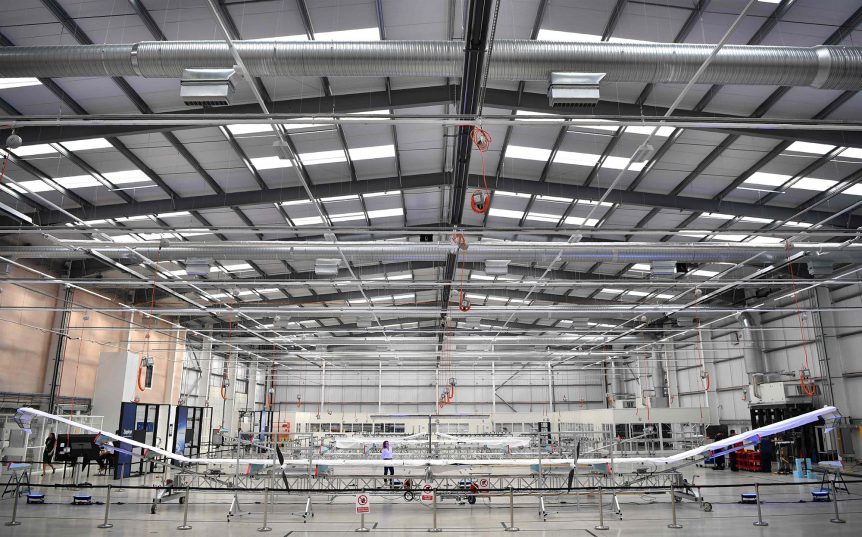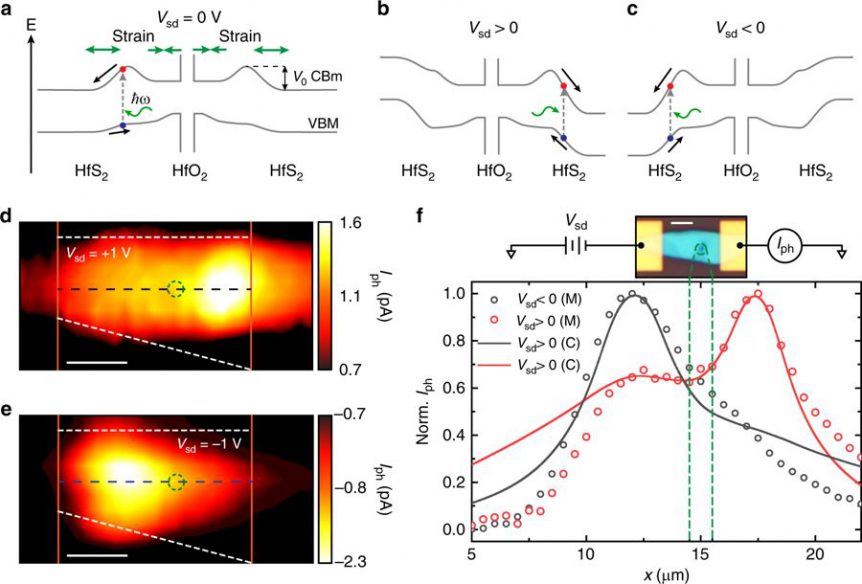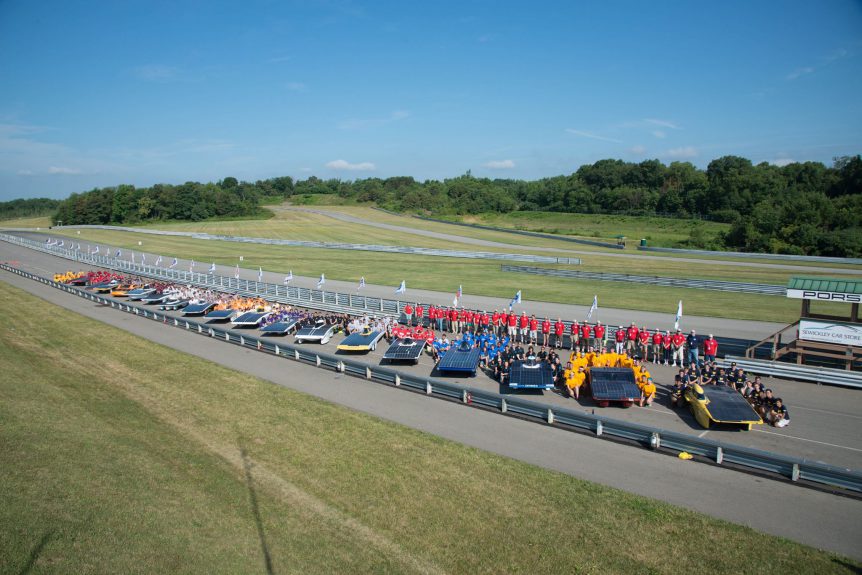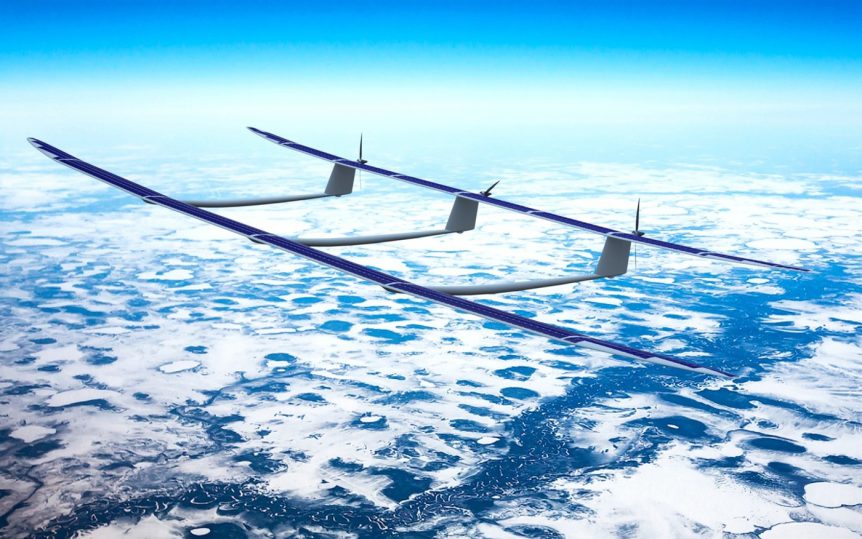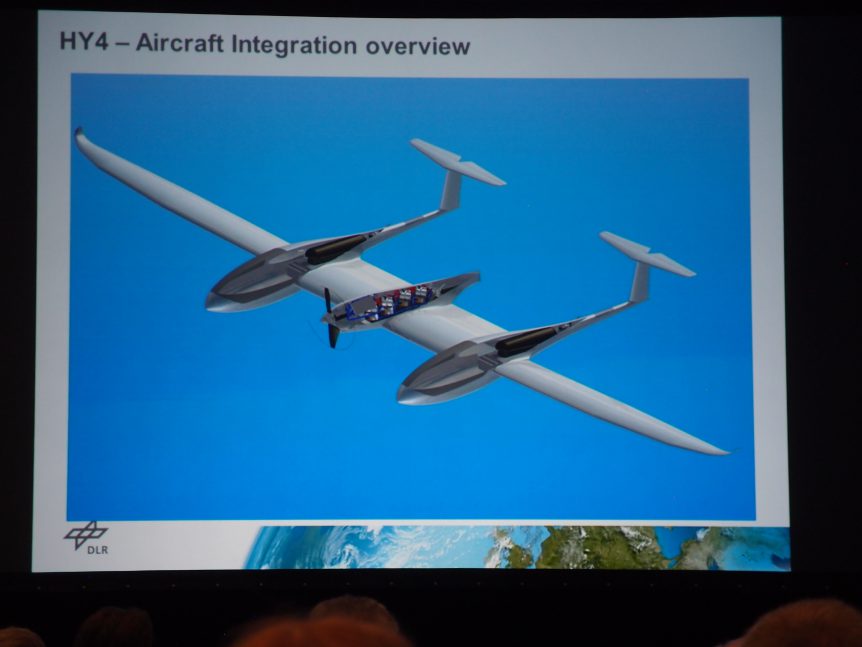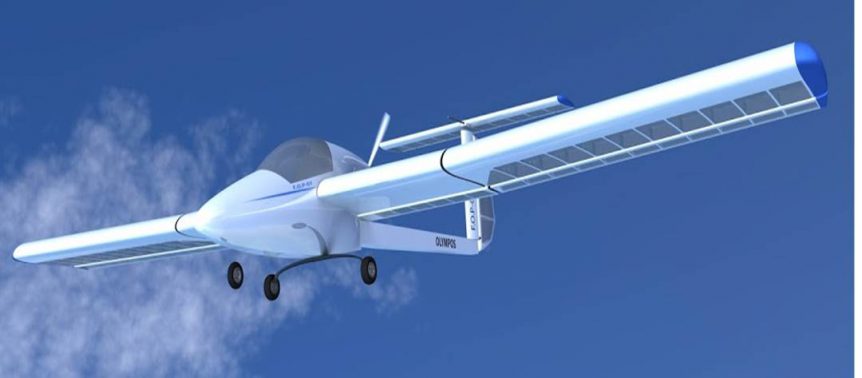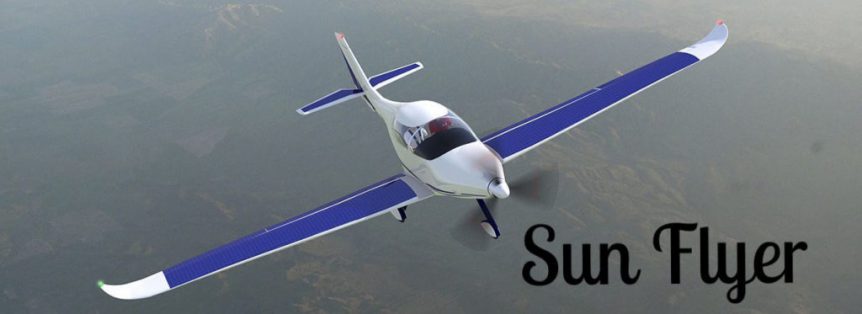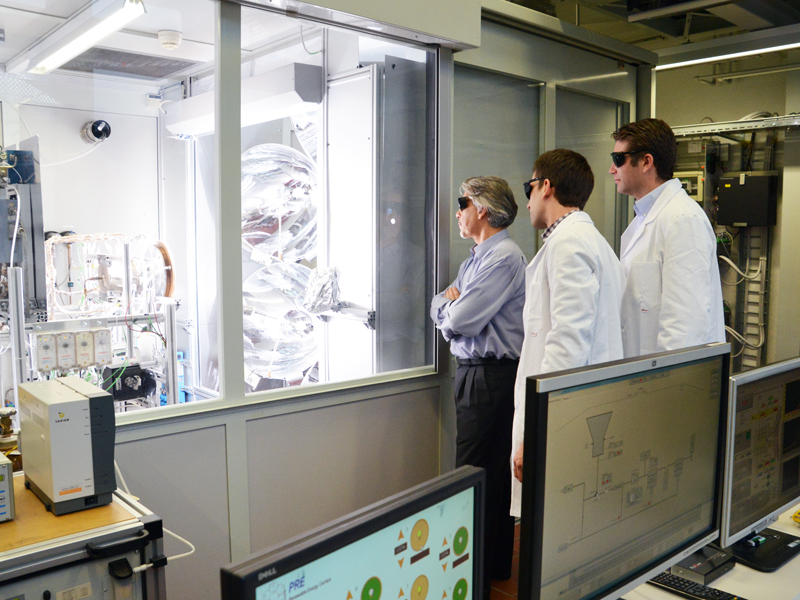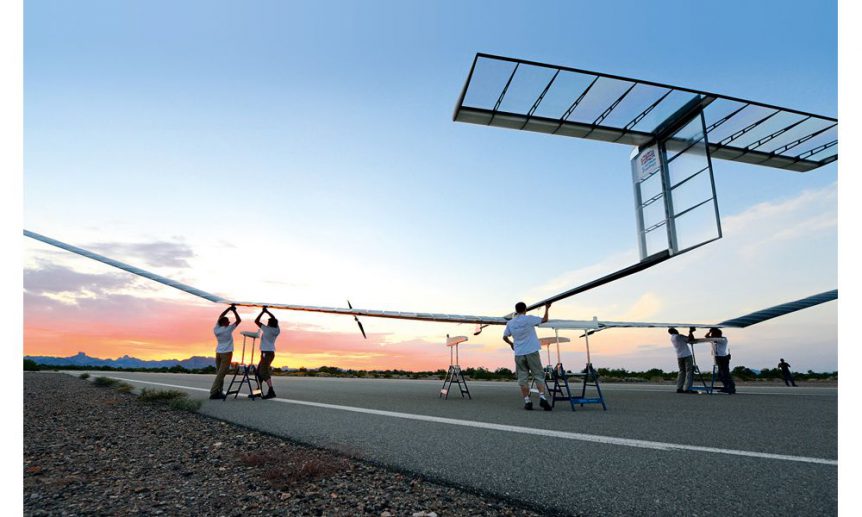The Royal Aeronautical Society, official record keeper for such things, announced in an August 8 press release, “Taking off from Arizona, US on 11 July, Airbus Defense’s solar-powered UAV (unpiloted aerial vehicle), the British-built Zephyr S, has smashed the existing endurance record for unrefueled, unmanned flight by staying aloft for 25 days, 23 hours and 57 minutes. This, the maiden flight of the production Zephyr S HAPS (high altitude pseudo satellite) for the UK MoD (United Kingdom Ministry of Defense), once verified, almost doubles the existing endurance flight record of 14 days, 22 minutes for UAVs, set by a previous Zephyr prototype in 2010. The solar-powered Zephyr UAV, which weighs less than 75 [kilograms – 165 pounds], flies at 70,000ft, above air traffic and weather, to provide a new class of platform for persistent surveillance, observation, communications relay or connectivity for military or commercial customers. Airbus said that the maiden flight saw test objectives met with further flights planned in …
Funneling Light and Energy with New Materials
Dr. Adolfo De Sanctis, a Research Fellow in the Quantum Systems and Nanomaterials group at the University of Exeter (UK), earned his Ph. D. in physics with a dissertation on “Manipulating light in two-dimensional layered materials” (Nature Communications, May 2017). The video below gives a short-hand view of his work. Other, less scholarly outlets (like this one) give an easy-to-read view of what he has accomplished, and why his research is of interest for many applications – including energy harvesting. Green Optimistic reports, “A team of researchers from the University of Exeter developed a solar cell with a record 60% efficiency. The idea behind this breakthrough is similar to using a ‘funnel’: corralling an amorphous collection of electrical charges into a more precise area, where they can be transferred into use. Using this idea, the researchers increased the efficiency of a solar cell from 20 to 60 percent. The Exeter team sees their research as a ‘gateway’ for further research …
Riding the Sunshine Highway
Sunday, July 22 found your editor at Bend, Oregon’s High Desert Museum for the finish of the 2018 American Solar Challenge. The race started in Omaha, Nebraska on July 14 and followed parts of the Oregon National Historic Trail and the Lewis and Clark Trail. Omaha, NE (Starting line) – July 14 Grand Island, NE (Checkpoint) – July 14 Gering, NE (Stage stop) – July 15 – 16 Casper, WY (Checkpoint) – July 16 Lander, WY (Stage stop) – July 17-18 Farson, WY (Checkpoint) – July 18 Arco, ID (Stage stop) – July 19 – 20 Mountain Home, ID (Checkpoint) – July 20 Burns, OR (Stage stop) – July 21 – 22 Bend, OR (Finish line) – July 22 Teams came from colleges and universities all over the world. Six of the single-occupant vehicles (SOV) and one multi-occupant vehicle (MOV) managed the entire 1762.7 miles without breakdown or significant mechanical difficulties. Considering the cars had to make it over the …
SolarStratos Damaged During Testing
A terse announcement from the SolarStratos project last week caused some dismay in your editor, but also gave hope that a brave project would go forward. “Payerne, July 6, 2018 – the solar stratospheric SolarStratos aircraft damaged this morning during a resistance test on Earth, in the base of the team at Payerne. No risk:” The bad news, “However, the wing was damaged and its repair will cause a delay in the team’s operational schedule,” was reminiscent of a failure of the Solar Impulse’s wing during static testing. The break set that project back over a year but resulted in a wing that carried Solar Impulse 2 to Morocco and back, across the U. S., and finally, around the world. Raphael Domjan, founder of the SolarStratos project, takes a philosophical view of the setback. “Our plane is a unique prototype, destined to accomplish what nobody has done so far: fly to the stratosphere in a clean way, thanks to solar …
UAVOS Triplicates Tandem Flight
Aeroelastic deformation, the reshaping of wings, tails, and even fuselages on aircraft subjected to the forces surrounding passage through the air, can be destructive, twisting and shaking aircraft surfaces. UAVOS, a company specializing in flight controls for drones of all sizes, has created a tandem-wing, tri-tailed High-Altitude Psuedo Satellite (HAPS) called ApusDuo. https://en.wikipedia.org/wiki/Aeroelasticity Wikipedia gives a long and involved discourse on aeroelasticity, but UAVOS gives a lighter, more graphic approach that shows the dangers involved, and UAVOS’ approach to conquering those perils. https://www.youtube.com/watch?time_continue=11&v=1YsloiRVEzs The firm makes three autopilots for varying sizes of aerial vehicles from those weighing less than 15 kilograms (33 pounds) to up to 1,500 kilograms (3,300 pounds). UAVOS craft include rotary-wing vertical takeoff and landing (VTOL) machines capable of carrying from one kilogram (2.2 pounds) to 90 kg.(198 pounds), and conventional aircraft that include an autonomous version of the Pipistrel Sinus. Their ApusDuo has two wings, with the main wing spanning 15-meters (49.2 feet), equal to …
Sustainable Skies in San Francisco
I’m writing this in the first person, rather than the usual third-person voice that allows me to remain objective about things on which I report. In this case, I have been the recipient of much joy over the last ten years from being an observer of the ongoing progress in electric aviation. Dr. Brien Seeley, founder of the Sustainable Aviation Foundation, asked me to begin writing a blog about electric aviation in 2009. One of my original postings concerned a Kitplanes Magazine contributor, David Ullman – who was this year’s Sustainable Aviation Symposium’s keynote speaker. In 2009, he predicted a great future for electric aviation – most of which has come to pass, and some of which he is creating in his hangar with his fully-instrumented wind tunnel and ambitious blown-wing design. He proposes something called USTOL, Ultimate Short Takeoff and Landing, aircraft that will use a dynamic relationship between their power and lift systems. His vehicle for demonstrating this …
From Anime to Low-Powered Electric Flight
A team in Japan has flown a low-power electric canard motorglider, and is now building a more conventional, lightweight electric aircraft. Members of Aircraft Olympos Ltd. on the large island of Hokaido have been instrumental in building and flying everything from a jet inspired by one of Hayoa Miyazaki’s anime productions (Nausicaa (Dove) Of The Valley Of The Wind – 1984) to some fascinating electric aircraft. Brian Carpenter met Tota Ueno, a worker on the project, and visitor at one of Brian’s maintenance classes in Corning, California. Brian was selected by the National General Aviation Awards Committee as the recipient of the 2017 National Aviation Maintenance Technician (AMT) of the Year Award. His classes in ultralight aircraft maintenance and two-stroke engine repair and maintenance obviously draw a worldwide audience. Beyond that, he has been developing the EMG-6 ultralight, which can be powered by traditional two-stroke engines or one or more electric motors. He’s been testing a series of motors and …
George Bye is a Busy Electrical Entrepreneur
George Bye, with his namesake company, Bye Aerospace, is involved in projects ranging from solar-powered drones to 345 mph VTOL cross-country cruisers. Following the Money People are betting on the plausible success of George’s SunFlyer 2, built by subsidiary Aero Electric Aircraft Corp. (AEAC), and he’s received deposits on 105 of the two-seat training craft. Due for release in the next two years, one prototype nears test flights this year. As its capabilities are demonstrated, Spartan College of Aeronautics and Technology might increase its initial reservation for 25 SunFlyers. Think of the impact this will have on flight training schools when SunFlyers and Alpha Electros begin delivering new pilots. George did a great job of extolling the virtues of electric aviation in an online IEEE Spectrum article, “Cheaper, Lighter, Quieter: The Electrification of Flight Is at Hand.”* He notes that the airplane will be certified in the “standard-category, day-night visual flight rules” category, “with a target gross weight of less than …
Earth, Air, Water and Jet Fire
“I have always loved the desert. One sits down on a desert sand dune, sees nothing, hears nothing. Yet through the silence something throbs, and gleams.” Antoine de Saint-Exupéry, The Little Prince The SOLAR-JET project (Solar chemical reactor demonstration and Optimization for Long-term Availability of Renewable JET fuel. or SOLAR-JET) pulls carbon dioxide from the air, mixes it with water and exposes the mix to 1,500 degree (Centigrade) concentrated solar energy and makes a synthetic natural gas, with oxygen as the only exhaust. Attempting to produce a useable fuel from CO2 has been an obsession for many over several decades. Attempts to capture and store CO2 are expensive and usually only hide the carbon, ostensibly for eternity. SOLAR-JET explains its objectives on its web site. “The aim of the SOLAR-JET project is to demonstrate a carbon-neutral path for producing aviation fuel, compatible with current infrastructure, in an economically viable way. Because the process hopes to pull CO2 from the atmosphere, the …
Airbus, Williams Team to Expand Zephyr Program
What’s the HAPS, Guys? Airbus and Williams Advanced Engineering, two heavy hitters with the world’s largest commercial airliner and the world’s fastest formula electric cars, are collaborating on making a light, slow airplane stay up indefinitely. Their memorandum of understanding (MOU) seeks to integrate Williams’ demonstrated abilities with “ultra-lightweight materials, battery technologies and electrical cell chemistries… in… Airbus’ Zephyr High Altitude Pseudo-Satellite (HAPS) program.” Airbus Defense and Space has worked with Sion Power Corporation since 2015 to use Sion’s proprietary lithium-Sulfur (Li-S) batteries for use in Airbus’ Zephyr aircraft. The current Zephyr S is the latest iteration of a series of solar-powered, unmanned aerial systems (UAS) that will fly at 65,000 feet for months at a time. High Over Dubai Airbus and Sion have expanded the Zephyr S’ performance envelope to accomplish a 336-hour flight in 2010, and a climb to 61,696 ft (18,805 meter) over the United Arab Emirates in 2014. Airbus compares the ability of Zephyr to that …

